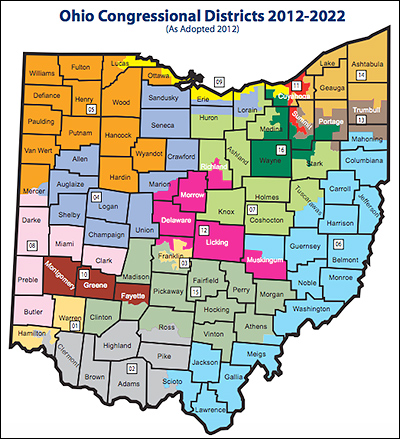The American left and right, including their respective major party organizations, are again spending abundantly in certain House races as we enter the final week of the campaign. In fact, according to new Federal Election Commission independent expenditure (IE) filings just made public, the two sides (House party organizations coupled with outside group spending) have combined to spend $26.4 million during just the Oct. 27-29 period. Of this total, Republican/conservative groups have spent a tick under $14 million, while the Democrats and liberal organizations have spent $12.5 million. Remember, all of these expenditures cover only a three-day period.
The top two races receiving monetary attention in this critical time frame are in New Hampshire, where Rep. Frank Guinta (NH-1-R) is defending the seat he won from ex-Rep. Carol Shea-Porter (D) in 2010. In just the past three days, the Democratic Congressional Campaign Committee (DCCC) has laid down $1.037 million on Shea-Porter’s behalf, mostly for media expenditures on negative ads against Rep. Guinta. Countering that number is the American Action Network, which dropped $637,000 to fund either positive Guinta or negative Shea-Porter ads.
The top Republican recipient is Illinois Rep. Judy Biggert who is having a difficult time in a radically redistricted seat that Democratic leaders designed to defeat her. She opposes former Rep. Bill Foster (D), who lost his 14th District seat in 2010. The National Republican Congressional Committee (NRCC) spent $837,000 on Biggert’s behalf, while the DCCC countered with $743,000 to help Foster.
At least one other incumbent race is seeing combined party and group spending exceed seven figures for this short period. Minnesota Rep. Chip Cravaack (R-MN-8) has witnessed the NRCC and the American Action Network (AAN) combine to spend more than $1 million in his heavily Democratic district. Another such CD is the open IL-13 seat that Rep. Tim Johnson (R) is vacating. Republicans and the AAN dropped more than $850,000 here for Rodney Davis as compared to the DCCC’s $329,000 to help their nominee, Dr. David Gill.
The AAN spent more than $500,000 apiece in California (Rep. Jeff Denham, R-CA-10) and Nevada (Rep. Joe Heck, R-NV-3), in addition to the Guinta and Cravaack races, while the House Majority Fund dropped major six-figure expenditures to help New York Rep. Tim Bishop (D-NY-1) hold his Long Island CD and over $400,000 to help Connecticut Democrat Elizabeth Esty fend off a strong challenge from Republican state Sen. Andrew Roraback in the seat that Rep. Chris Murphy (D-CT-5) is vacating to run for the Senate.
A couple of surprise protects are popping up late for both sides. Democrats, particularly when seeing almost $1 million go toward independent expenditures in Michigan’s 1st CD that contains the state’s Upper Peninsula, believe they have a strong chance to unseat freshman Rep. Dan Benishek. Another strong sleeper campaign might be found in the Orlando area, as the DCCC is dropping more than $427,000 in order to help elect former police chief Val Demings over freshman Rep. Dan Webster (R-FL-10) in Florida.
Democrats are surprisingly spending copiously in Arizona and New York to fend off what they see are serious threats to freshman Rep. Ron Barber (D-AZ-2) and two-term Rep. Bill Owens (D-NY-21).
Republicans believe they have a great closing shot to maintain the new 1st District in Arizona, and to defeating Pennsylvania Rep. Mark Critz (D-PA-12) who won a brutal primary battle against fellow Democratic Rep. Jason Altmire (D-PA-4), only to find himself in a relatively strong Republican seat.
No surprise that the IL-17 contest between freshman Rep. Bobby Schilling (R) and local East Moline official Cheri Bustos (D) is hotly contested, as is the inter-party pairing in Ohio between Reps. Betty Sutton (D-OH-13) and Jim Renacci (R-OH-16). Both of these campaigns are considered toss-ups.
Of the top 10 races where Democrats are spending, three are to protect incumbents. On the Republican board, five of their top 10 expenditure races are for individuals already serving in the House.
 May 8, 2018 — Today’s elections kick-off the prime time of primary season, with voters in four states — Indiana, North Carolina, Ohio and West Virginia — choosing nominees for November. Here is an outlook for each of the states:
May 8, 2018 — Today’s elections kick-off the prime time of primary season, with voters in four states — Indiana, North Carolina, Ohio and West Virginia — choosing nominees for November. Here is an outlook for each of the states: 



